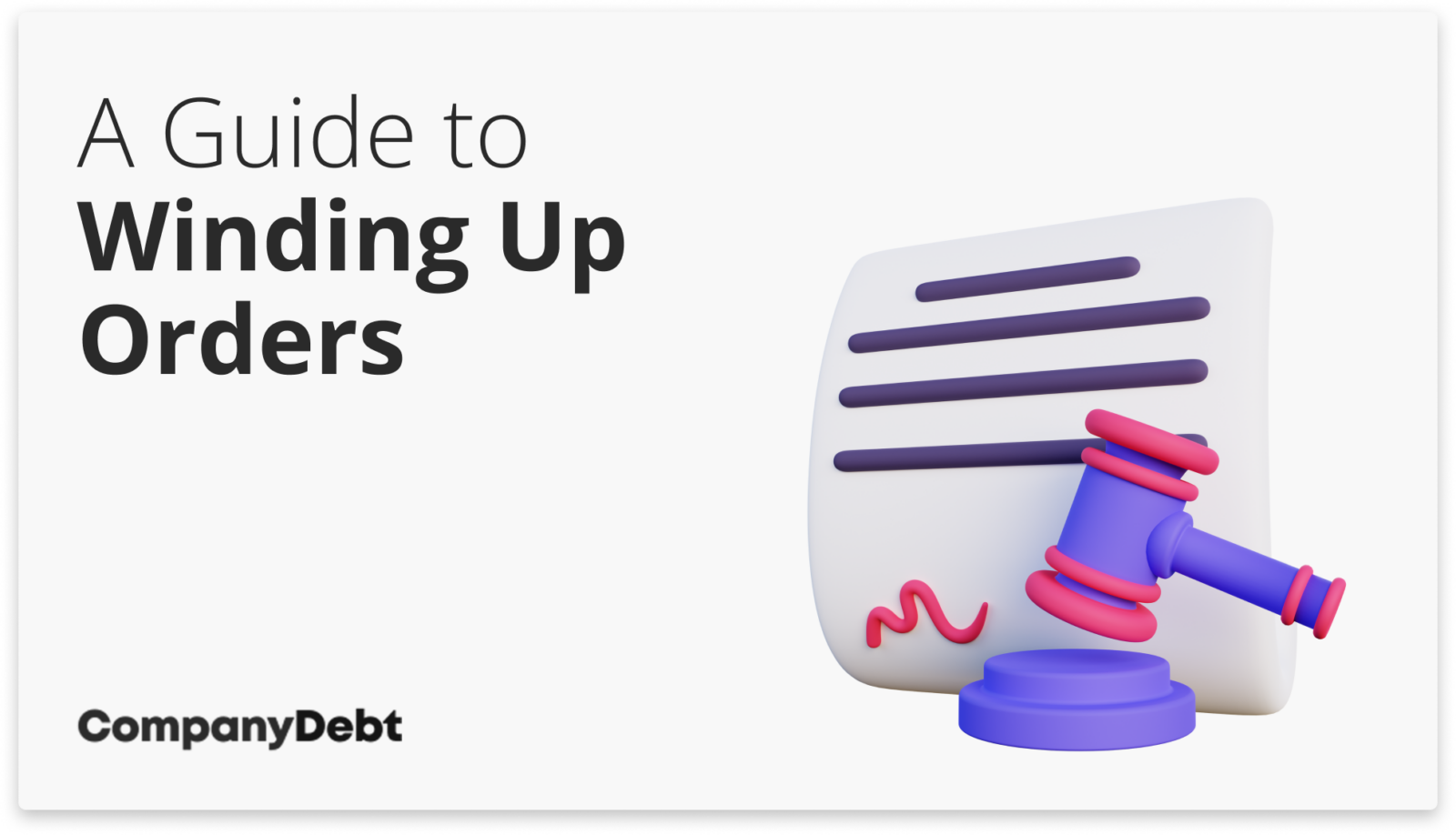
What is a Winding up Order, and Can it be Stopped?
What is a Winding Up Order?
A winding up order is a court order that forces your insolvent business to close and liquidate its assets.
It is the most serious legal action any company can face and, due to the costs involved, is typically initiated by larger creditors such as HMRC.
When this happens, your company must:
- Stop trading immediately
- Liquidate all assets
- Hand over control to an Official Receiver or appointed liquidator
It’s vital to take professional advice at the earliest opportunity if you’re business is facing creditor pressure. Our experts are here to advise on your best options.

What Are the Reasons for Issuing a Winding Up Order?
A court may issue a winding up order when:
- A creditor petitions the court after you’ve failed to pay a debt of at least £750.
- The court is satisfied that your company can’t pay its debts.
- The court finds it just and equitable to wind up your company.
The winding up order will typically be preceded by a 21-day statutory demand for payment and a winding up petition.
If the company fails to comply with this demand or reach an acceptable payment arrangement within the stipulated period, the creditor is entitled to petition the court for a winding up order[1]Trusted Source – GOV.UK – Getting a winding-up order.
How Long Does the Winding Up Process Typically Take?
If you’re facing a Winding Up Order, you’re likely concerned about the timeline.
The process usually takes 1 to 2 years, but complex cases can extend longer. Here’s a quick overview:
| Event | Timeline |
|---|---|
| Petition to Court Order | 2-3 months |
| Appointment of Official Receiver | Immediate |
| Creditors’ Meeting | Within 3 months |
| Asset Realisation | 6-12 months |
| Distribution to Creditors | Ongoing |
| Final Report and Dissolution | 3-6 months |
Several factors can extend these timeframes:
- Creditor disputes
- Legal challenges
- Complex asset structures
- Investigations into company affairs
What are the Options if a Winding Up Order is Made?
When faced with a winding up order, you have two main options, both of which require specialist legal advice and prompt action.
Rescind the Winding Up Order
This option allows you to ‘undo’ the order under Rule 12.59 of the Insolvency (England and Wales) Rules 2016[2]Trusted Source – GOV.UK – Rule 12.59 of the Insolvency (England and Wales) Rules 2016. You’ll need to prove to the court that the circumstances which led to the order no longer apply.
For instance, if you’ve paid the debt or reached an agreement with creditors. The procedure is outlined in paragraph 11.7 of the Practice Direction on Insolvency Proceedings.
Time is critical here – you typically have only 5 business days to act.
Appeal the Winding Up Order
You can appeal under Civil Procedure Rule 52.11, but this path is more challenging[3]Trusted Source – GOV.UK – Civil Procedure Rule 52.11. You must demonstrate that the decision was either wrong or unjust due to serious procedural irregularities.
For example, if you weren’t properly notified of the hearing or if new evidence has come to light. You have 21 days to file an appeal, but it’s best to act as soon as possible.
Both options require strong grounds and quick action. The court will consider all parties’ interests when making its decision.

We can discuss your options with you and help you carefully consider the implications of each. For a free, no-obligation consultation, please get in touch with our team.
The Role of Insolvency Practitioners
Insolvency practitioners play a crucial role once a winding up order is issued. Appointed by the court, these professionals manage the liquidation process, ensuring that all legal and regulatory requirements are met.
IPs responsibilities include collecting and valuing the company’s assets, paying off creditors in accordance with legal priorities, and conducting an investigation into the conduct of the company’s directors.
This investigation is key to determining whether there were any acts of wrongful trading or breaches of duty that contributed to the company’s financial downfall.
Insolvency practitioners also provide a final report to the creditors and the court, outlining the outcomes of the liquidation and any actions taken against the company’s directors.
Winding up Order FAQs
How Can Directors Prepare for a Winding-Up Hearing?
Directors should consult with legal and financial advisors to understand their position, gather evidence to dispute the debt if applicable, and consider negotiating with creditors to settle debts or secure an adjournment.
What Impact Does a Winding-Up Order Have on Employees?
When a winding-up order is issued, the company ceases operations, leading to job losses. Employees may claim unpaid wages, holiday pay, and redundancy from the National Insurance Fund up to statutory limits.
How Does a Winding-Up Order Affect Company Assets?
All company assets are frozen and eventually sold or liquidated by the appointed liquidator. The proceeds are used to pay off creditors in order of priority, as defined by insolvency law.
What Happens if a Director Is Found Guilty of Wrongful Trading?
If a director is found guilty of wrongful trading, they could be held personally liable for company debts from the point they knew (or should have known) the company had no reasonable prospect of avoiding insolvency.
The primary sources for this article are listed below, including the relevant laws and Acts which provide their legal basis.
You can learn more about our standards for producing accurate, unbiased content in our editorial policy here.
- Trusted Source – GOV.UK – Getting a winding-up order
- Trusted Source – GOV.UK – Rule 12.59 of the Insolvency (England and Wales) Rules 2016
- Trusted Source – GOV.UK – Civil Procedure Rule 52.11






